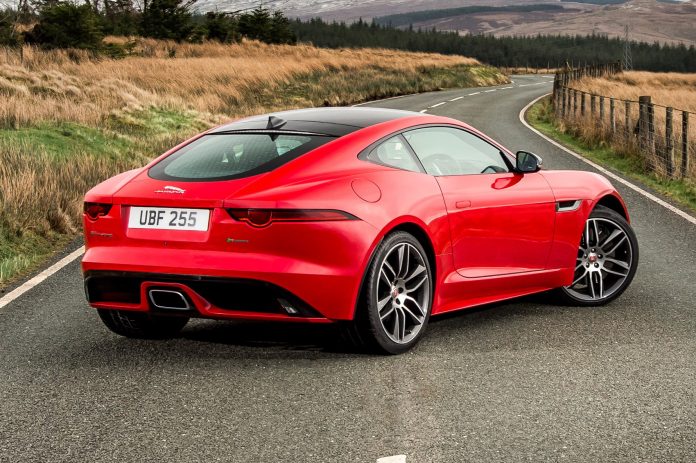When the Jaguar F- Type (Four cylinders) made its debut in 2012, it was met with all the scrutiny you would expect for the successor of one of the most iconic vehicles of all time. Following Jaguar’s E-Type roadster could have easily been a capital F failure, but instead Jaguar delivered a solid winner that has grown into 24 different variants, from a V-6 supercharged roadster to a 575-horsepower coupe capable of hitting 320 kph. The latest F-Type variant is an entry model powered by a 2.0-liter turbocharged four-cylinder engine. Here are the unbelievable features and the key takeaways.
All new engine
Although billed as all-new, the F-Type’s 1997cc direct-injection four-cylinder is a derivative of the Ingenium-branded engines used in Jaguar’s F-Pace SUV and XE sedan. What is new is that the inline-four’s exhaust manifold is integrated into the cylinder head, which helps improve fuel economy and reduces emissions due to quicker light off. The single piece manifold and cylinder head heat up quickly for more efficient fuel combustion. That fuel is directly into each cylinder and compressed with air rammed in by a twin scroll turbocharger with ceramic bearings. Output is a very a respectable 296 horsepower.
Its more lighter
Jaguar claims its new four-cylinder engine saves approximately 52 kg over an equivalent F-Type powered by the previous entry-level engine, a 3.0-liter supercharged V-6 that makes 340 horsepower. Jaguar also claims its base model is the lightest F-Type yet, with 1 percent better weight distribution and front and rear spring rates. These features have been reduced by 4 and 3 percent, respectively, to suit the reduction in mass. This F-Type’s character is much lighter, leaner, and far less tail happy. Unlike the monster SVR, the four-banging F-Type exits corners with just as much confidence, bravado, and grip as it has on entry.
New Led lights and single exit exhaust
The light theme continues with new full LED headlights that incorporate daytime running lamps. Four distinct bumpers, each faster-looking and more fenestrated, span the range from base to top-step SVR. Quad pipes at the corners indicate V-8 power, and a double exhaust at center means V-6. A single, centrally positioned rhomboid exhaust means the new four-cylinder crackles and pops in Sport mode. This makes it to be a little bit quieter than its earlier brothers.
New seats
Thinner, racier seats now grace the cabin of all F-Types and come in two types—Sport and Performance. Base model and R-Dynamic models come with Sport seats, while the higher-spec 400 Sport. Moroever, SVR F-Type get Performance versions, which are sculpted at shoulder height for more support. Both have seat frames made of magnesium alloy, which saves up to 7 kg without compromising support or safety.
Upgraded electronics
In addition,it has updated InControl Touch Pro infotainment system, which is slowly making its way across the entire product line. The F-Type gets a familiar suite of driver assistance systems centered around a new forward-facing stereo camera system. This system is mounted behind the rear view mirror. It has emergency automatic braking, lane departure warning, lane keep assist and traffic sign recognition. Furthermore,it has an adaptive speed limiter ,thanks to the addition of this camera system.








